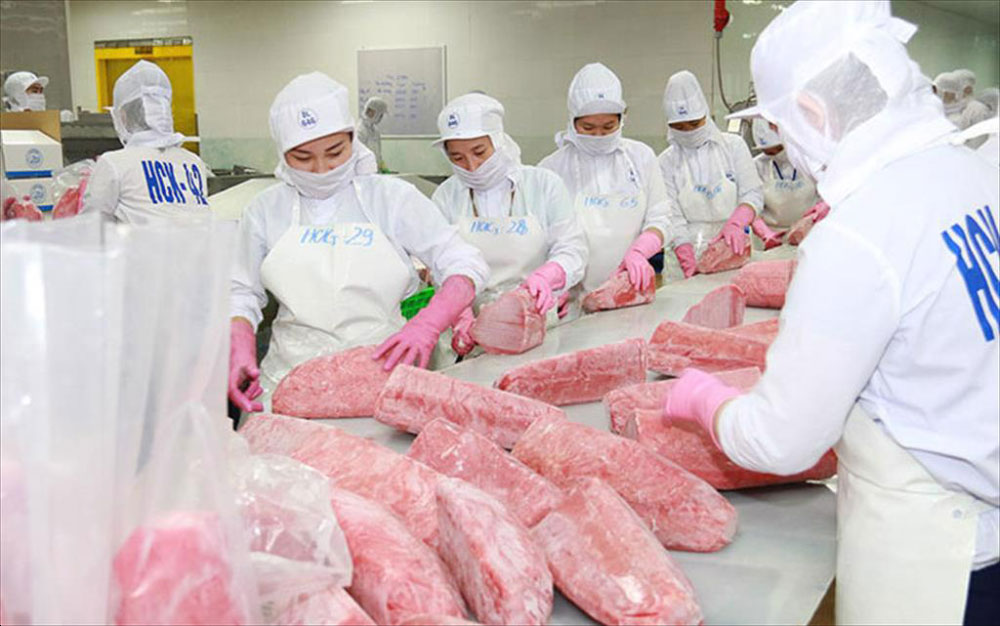Vietnam Seafood
Increase in the market share of Vietnamese canned tuna in the US
Vietnam’s canned tuna exports continue to grow rapidly in the first months of 2024. In April 2024 alone, canned tuna exports to this market increased by 127%, reaching more than 10 million USD. Cumulatively, in the first 4 months of 2024, exports to this market reached more than 38 million USD, up 102% over the same period in 2023 and up 25% over the same period in 2022.
According to statistics from the US Department of Agriculture, Vietnam is currently the second-largest source of canned tuna for the US market, accounting for 16% of the country’s total import volume, after Thailand.
Although the US is increasing imports of canned tuna from Vietnam, the country’s total imports in the first quarter of 2024 decreased slightly over the same period, reaching only nearly 33 thousand tons. The reason is that the US reduced imports from Thailand, the largest source of tuna for this market, accounting for 51% of total import volume. In the first quarter of 2024, US canned fish imports from Thailand decreased by 9%. The average price of Thai canned tuna products exported to the US in the first quarter of 2024 fluctuated around 4,422 USD/ton.
Along with Vietnam, Mexico’s canned tuna exports to the US are also increasing slightly. The average export price of Mexican canned tuna products to this market in the first quarter of 2024 tends to increase compared to the same period in 2023, fluctuating at 4,735 USD/ton.

Meanwhile, Indonesia and Ecuador are losing their market share in this segment in the US market. Canned tuna exports from these two countries to the US have both decreased. In particular, Ecuador’s canned tuna products decreased by 88% over the same period last year due to sharp increases in prices.
Chinese canned food manufacturers continue to reduce its exports to the US due to high tariffs.
Currently, the US economy is gradually recovering, and tuna prices on the world market are cooling down, so the country’s canned tuna imports will gradually recover. The US tends to reduce imports from Thailand to reduce dependence on this supply and increase imports from other countries, such as Vietnam.
(Source: https://seafood.vasep.com.vn/)



 Tiếng Việt
Tiếng Việt